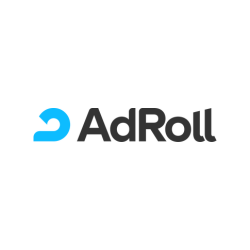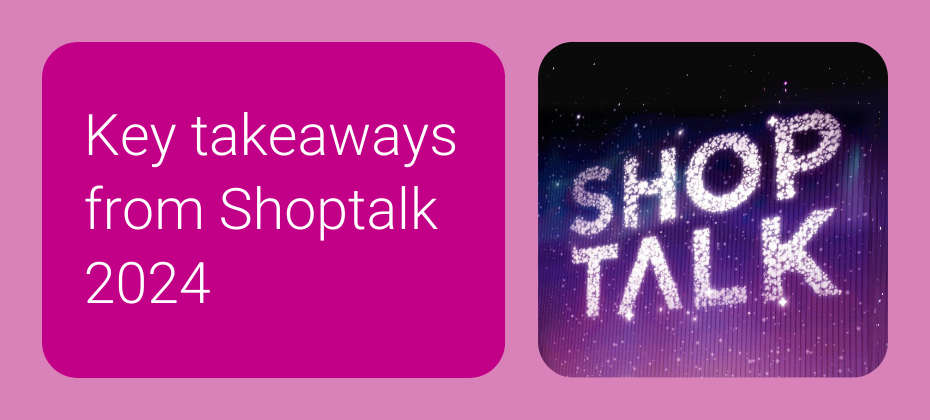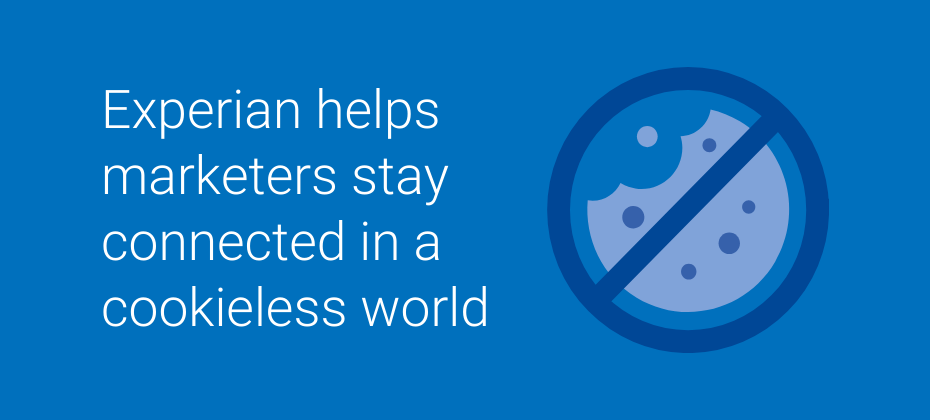At A Glance
As CTV viewership grows, marketers face challenges in targeting and measurement across fragmented platforms. Identity resolution and audience strategies, supported by Experian’s syndicated audiences and privacy-safe solutions, help DSPs and advertisers reach high-value audiences, improve campaign accuracy, and drive measurable outcomes.In our Ask the Expert Series, we interview leaders from our partner organizations who are helping lead their brands to new heights in AdTech. Today’s interview is with George Castrissiades, General Manager of Connected TV at AdRoll.
Premium reach and fragmentation
As viewer attention fragments across platforms, how should marketers redefine “premium reach” in CTV to prioritize engagement and audience quality over scale alone?

A few years ago, ad supported streaming over-indexed on younger adults, those without much financial history and much more budget conscious. It would have been fair for B2B brands to assume that maybe they weren’t going to find their C-Suite audiences on those channels, and so connected TV(CTV) was positioned as a top of funnel tactic aimed at retail. But that’s all changed – ad-free prices are going up, and ad supported tiers are the norm across the majority of channels. 66% of adults have at least one ad supported streaming channel, and adults today spend nearly as much time streaming movies and TV as they spend on their mobile phones. Now that ad viewing audiences on CTV really span the full spectrum of demo, techno, and firmographic segments, savvy marketers should partner with platforms that offer breadth and depth of targeting and measurement to find the highest value audiences wherever they’re watching CTV and serve them highly relevant ads that draw their attention towards the screen. I know I’m jumping out of my seat whenever I see an AdTech or MarTech ad.
Identity and relevance
What does a strong identity framework unlock for delivering household- and person-level relevance across screens, and how does it reshape audience planning?

In privacy-safe ecosystems, people want to share less data and log in to websites and browsers less frequently. If you can’t resolve a household ID to a CTV device through Safari and other sources of obfuscated identity, you’re going to end up losing a lot of signal along the way. On top of that, targeting smaller, higher-value audiences means this attrition can have a profound impact on your ability to build meaningful reach and use audience forecasts to predict scale. A strong identity framework is the key to maintaining as much of your planned audience as possible and staying true to initial forecasts.
AI and outcome planning
How is AI evolving CTV from tactical bidding to strategic outcome planning, and what mechanisms are in place to validate true performance lift?

Tomorrow isn’t guaranteed, especially not in advertising. Audiences change where and when they consume media, and so shifting budget to a placement that did well yesterday is like buying a stock when it’s outperforming – the gains might be gone by then! Predictive AI is bridging the gap to find the highest value and most engaged audiences in real time, versus being purely reactive. This helps drive outcomes which we see in the form of pipeline influence, ROAS, and site traffic lift – without exponentially increasing costs. The same is true for account-based marketing(ABM) outcomes – there’s a blend of signals, account “fit” and intent data that needs to be evaluated in a deeper, more intelligent way. AI is helping to find those highest value accounts, even before they’re in market, which means smart marketers aren’t showing up late to the party.
Measurement and incrementality
What privacy-safe, closed-loop measurement frameworks should become standard to prove incremental visits and sales from CTV campaigns?

Working with a dedicated multichannel, full-funnel ad and marketing platform like AdRoll can easily let you know when a user arrives at your site and makes a purchase, but understanding how that customer arrived there and which tactics deserve the credit requires a deeper, more sophisticated workflow. Our partnership with Experian allows all devices in a household to ladder back up to a household ID, so we can ensure accuracy without pivoting on anything personally identifiable. This works perfectly in CTV, an environment that follows an app workflow of user resettable device IDs rather than IP address or email but always connects seamlessly to web tokens including cookies. Accuracy, scale, and privacy are maintained in a proven way – you see this tech underpinning the infrastructure of streaming across all the biggest players, so marketers can rest easy.
Creative and commerce
How can creative sequencing and shoppable TV experiences convert living-room attention into commerce without compromising user experience or feeling intrusive?

I like to say that CTV trades attention for action. Users lean back and focus on the messaging and visuals of the big screen rather than scrambling for the mouse or tapping to close some intrusive pop-up. This focus means that the messaging is absorbed more quickly, but creatives can wear out their welcome just as fast. Sequential messaging really helps to move the messaging along without subjecting the viewer to longer ads where attention wanes, but also increases brand recall and specific product information because the story evolves with each impression. This is a great tactic to use when you want a viewer to take a specific action later – but shoppable ads can help motivate a user to act now, and new formats can really simplify things. Shoppable can feel out of range for most – the top players in this space own major e-comm storefronts and then tie them back into their own demand-side platforms (DSPs), content, and streaming devices. For the rest of us, dipping our toes in slowly through simple and cheap solutions like QR codes can connect audiences right to a web experience from their TVs, or intermediate solutions like interactive video ads. Users love to play around with fun on-screen experiences, and there’s a whole spectrum of crawl/walk/run options available.
Trust and governance
Which shared guardrails—brand safety, fraud control, and frequency management- are essential to unlocking sustainable, scaled investment in CTV?

I’ve always thought of CTV inventory analogously to high-end watches – if you buy from the source or a well-known, reputable dealer, you’re probably buying the real thing. But that fancy timepiece the guy was selling outside the bar, that you swore looked real? Probably not. Untrusted resellers and too-good-to-be-true pricing might mean you’re running ads on a screen at a lonely gas station at 3 am to an audience of no one, and that’s not even the worst case scenario. Good relationships and deep pockets can solve brand safety and fraud issues, but not every advertiser is going to have those resources. Brand safety and fraud prevention can reduce workload and help distinguish the good stuff from the growing pool of gray area, arguably, CTV inventory that isn’t what was promised to a customer. Outsourcing this trust also goes a long way, with buyers knowing you’re not grading your own homework. Frequency management is equally as important. Once you have your audience and your good supply, it’s important not to abuse a single household just because they meet your targeting criteria. Reach is your best friend with CTV.
Data and audience strategy
How do Experian’s syndicated audiences provide a consistent, scalable foundation for planning, activation, and measurement across CTV and digital, and what outcomes are clients seeing?

We love to talk about how Experian’s data is such an integral part of so much of streaming’s architecture, and the fact that it’s built on deterministic datasets means you’re getting scaled audiences built on knowledge rather than best guesses. That means a lot when working across multiple channels, privacy-safe environments, and households with an ever-growing number of connected devices. Our customers are always delighted at how precise targeting can be, especially in the B2B/B2C space – and knowing the size of those audiences helps them to understand how budget transforms into reach in a more predictable way. It’s confidence-inspiring to point to a new audience and tell your client that these are their future customers. The best part is showing them the outcomes reporting – we consistently see a massive spike in site traffic and engagement on days when a new Experian syndicated audience is launched!
Contact us
FAQs
Identity resolution ensures marketers can connect devices and maintain audience accuracy. Experian’s identity solutions help reduce data loss and improve audience forecasts, making campaigns more effective.
With viewer attention spread across platforms, marketers need tools that offer both broad and detailed targeting. Experian’s syndicated audiences provide reliable, scalable data to help identify and reach high-value audiences across channels.
Techniques like sequential messaging and shoppable ads keep viewers engaged and encourage action. Simple tools like QR codes or interactive video ads can connect audiences to web experiences directly from their TVs.
Strong identity frameworks help DSPs maintain accurate targeting and audience reach, even in privacy-focused environments. By connecting devices to household IDs, solutions like Experian’s Digital Graph ensure DSPs can deliver relevant ads and measure performance effectively across channels.
About our expert

George Castrissiades
General Manager of Connected TV, AdRoll
George leads the CTV go-to-market strategy at NextRoll, driving rapid growth and adoption of the channel for both B2B and B2C customers. With a track record of building and scaling CTV solutions, he is focused on developing a strategic playbook that accelerates success in the evolving digital advertising landscape.
Before joining NextRoll, George spearheaded CTV product innovation at iSpot.tv and held leadership roles in product and operations at YouTube, VICE Media, Crackle, Roku, and Innovid. His expertise spans product development, monetization, and market expansion.

About AdRoll
AdRoll is a connected advertising platform built for growth-minded marketers. With powerful AI, flexible campaign tools, and seamless integrations, AdRoll helps mid-sized businesses turn complexity into clarity and clicks into customers. The AdRoll platform delivers full-funnel performance through multi-channel advertising, audience insights, and cross-channel attribution, supporting marketers across industries including ecommerce, technology, financial services, education, and more. For B2B teams, AdRoll ABM extends these capabilities with account-based precision, multi-touch campaigns, and real-time buyer intelligence. Backed by nearly 20 years of data and award-winning support, AdRoll enables marketing teams to advertise smarter, move faster, and achieve more, all from one place.
Latest posts

Shoptalk 2024, the premier event for retail and e-commerce professionals, brought together industry leaders to discuss the latest trends and innovations shaping the future of retail. As the retail landscape continues to evolve, here are four key takeaways from Shoptalk 2024: 1. The continuing rise of retail media networks The evolution of retail media is propelling us into a new era of advertising and first-party data monetization. Retailers are using their valuable first-party data to offer targeted advertising opportunities on both their owned and operated channels — from sponsored content to personalized ads — and through offsite programmatic ads. However, the full potential of retail media networks (RMNs) is hindered by challenges in understanding and targeting shoppers beyond retail data, reaching customers across channels and validating measurement. To unlock the true value of RMNs, and turn these challenges into opportunities, companies should focus on four areas: Gain insights: Learn more about your customers and the customers your marketing partners care about. Create audiences: Use enriched data to build addressable audience segments for advertisers to target. Maximize reach: Expand your addressability and monetize your data on and off platform. Demonstrate success: Validate marketing impact by connecting ad exposures to outcomes. “It was evident at Shoptalk 2024 that the rise of retail media is unstoppable. The conversations, collaborations, and insights shared at the event cemented the position of retail media networks as the driving force behind the future of commerce.”Alison Hofelich, Sr. Account Executive, Big Box Retail & Grocery 2. Content-led commerce Content is becoming increasingly pivotal in driving commerce, with retailers investing in shoppable video to stimulate conversations and foster customer engagement. While video may not always lead to immediate transactions, it can start dialogues, offering retailers a platform to enhance customer loyalty and influence future sales. Retailers talked about their focus on connecting with Gen Z on a deeper level. PacSun highlighted initiatives like the launch of a gender-fluid line and continuous engagement with young consumers via social media for feedback. Additionally, PacSun talked about embracing "conscious capitalism" by co-creating with influencers and customers, recognizing the growing consumer preference for brands that make a positive impact. By collaborating with influencers and using user-generated content, retailers can create authentic experiences that resonate with their customers. 3. Data privacy and trust With data playing a central role in retail strategies, ensuring data privacy, and building trust with consumers are imperative. Retailers must prioritize transparency and security to safeguard customer information and nurture long-term relationships. While the focus may currently be on capturing Gen Z market share, businesses need to anticipate shifts in consumer demographics and adapt their strategies accordingly. Using customer data in a privacy-compliant way enables retailers to implement effective personalization strategies that drive long-term engagement and loyalty. “Retail media networks were at the center of Shoptalk 2024. In addition to retail media networks, the seamless integration of data to enhance customer personalization and the rising importance of targeting Gen Z were recurring themes."Kai Rood, Account Executive, Retail Apparel 4. The time to embrace AI is now Technology continues to drive innovation in retail, with advancements in AI reshaping the shopping experience. From virtual try-ons to personalized product recommendations, retailers are using AI to engage consumers and enhance product discovery. Testing and learning are essential for AI implementation, as companies navigate the risks and rewards of technological innovation. Navigate the future of retail with Experian Shoptalk 2024 provided invaluable insights into the future of retail, highlighting the importance of retail media networks, content-led commerce, data privacy, and tech innovation. By embracing these trends and innovations, retailers can position themselves for success in an ever-evolving marketplace. At Experian, our solutions are tailored to empower businesses in navigating this dynamic landscape. Through our Consumer Sync solutions, we bridge the gap between online and in-store touchpoints, ensuring a unified strategy for reaching audiences across channels and evaluating campaign performance. Our Consumer View solutions enable you to tap into 5,000 demographic and behavioral attributes to fill in any gaps on your customer. Go beyond category buyers by combining your first-party data and Experian's top ranked data to build custom audiences that lead to higher ROI for your advertisers. Connect with a member of our team today to get started. Latest posts

The marketing world has been preparing for years for the end of third-party cookies, and the news has shifted again. In 2025, Google paused its plan to phase out third-party cookies in Chrome, opting instead to introduce new privacy controls that let users manage how their data is shared. Even with this change, one truth remains: privacy-first; identity-driven marketing is no longer optional. For marketers, it’s about moving beyond reliance on cookies toward durable strategies built on trust, consent, and connected data. What is cookie deprecation? Cookie deprecation refers to browsers ending support for third-party cookies, which have long allowed advertisers to track user activity across multiple websites. These cookies were the foundation of behavioral targeting and attribution. By contrast, first-party cookies, created by a brand’s own website, will continue to function. They store essential information like logins or preferences and are central to modern data collection strategies. The change aims to improve privacy and transparency, giving users more control over their information. For marketers, it represents a shift from broad tracking to consented, identity-based engagement. Experian’s view: While third-party cookies may linger longer than expected, identity should remain the cornerstone of every marketing strategy. Why is cookie deprecation reshaping the industry? The shift toward privacy-first marketing didn’t begin with Google, but Chrome’s decision to limit third-party cookies has amplified the impact. Safari and Firefox removed third-party tracking years ago, but Chrome’s dominance, with roughly 65 percent of the global browser market, makes its shift a defining moment for advertisers. Apple App Tracking Transparency (ATT): Requires user permission before app tracking. Global Privacy Control (GPC): Lets users signal how their data can be shared. General Data Protection Regulation (GDPR) and California Consumer Privacy Act (CCPA): Enforce consent and transparency in data use. Google Tracking Protection: Now limits cross-site tracking for 1 percent of Chrome users, about 30 million people, before a full rollout. The platform response Google’s Privacy Sandbox initiative and new user privacy control interface aim to balance personalization with user protection. These updates mark a shift toward data transparency rather than full deprecation. Experian supports this evolution by helping marketers adapt through privacy-led identity, data collaboration, and measurement solutions that meet compliance standards while maintaining addressability and performance across channels. How will cookie deprecation affect marketers? Marketers will notice several shifts: Less cross-site visibility: Without third-party cookies, connecting behavior across websites becomes difficult, making it harder to attribute conversions. Greater dependence on first-party data: Data collected directly from consumers (emails, preferences, purchase history) will be crucial for targeting and measurement. Increased adoption of alternative IDs: Solutions like Experian’s alternative IDs help maintain addressability and measurement in a cookieless world. Renewed focus on contextual advertising: Relevance now depends on where an ad appears rather than who sees it. New compliance expectations: Marketers must prove transparency and respect for consent under tightening global privacy laws. What challenges should marketers expect with cookie deprecation? Marketers face both operational and strategic hurdles as third-party cookies lose value. Addressability and targeting gaps Without universal identifiers, reaching audiences across channels becomes fragmented. Advertisers must unify data from CRM systems, mobile apps, and offline touchpoints to maintain reach. Measurement and attribution complexity As cookies disappear, so do last-click and view-through models. Solutions must rely on first-party data and probabilistic modeling to evaluate performance. Privacy and consent management Data collection now requires clear opt-ins, user control interfaces, and secure consent management systems that align with IAB standards. Resource and skill constraints Testing new identity and data solutions can be costly. Smaller teams may struggle to integrate clean rooms, universal IDs, or new reporting APIs. Experian’s role: Experian supports marketers through this transition with privacy-compliant data infrastructure, identity graphs, and measurement tools that work across every major platform. How can marketers adapt to a cookieless future? Cookies may still exist, but durable identity strategies are the future of digital marketing. Here’s how to prepare: Use first-party data: Collect information directly from your customers through loyalty programs, preference centers, and interactive content. Invest in analytics that translate this data into insight. Establish a trusted identity foundation: Experian’s Digital Graph connects more than 4.2 billion digital identifiers, linking households and devices in privacy-compliant ways. That means marketers can expand their addressable reach and understand audiences without relying on cookies. Experian’s data-collaboration solutions let you combine your first-party data with partner insights securely, unlocking deeper audience understanding. Explore alternative targeting technologies: Contextual methods powered by Experian’s data accuracy ranked #1 by Truthset, help you maintain personalization while respecting privacy. See how Experian’s identity resolution and data collaboration solutions can help you adapt in a cookieless world. What are the best practices for post-cookie marketing? Be transparent: Make consent simple and clear, and show how data adds value. Experian helps brands maintain transparency through privacy-first data solutions built on consented consumer information. Prioritize data quality: High-quality, verified data builds confidence and improves ROI. Experian’s accurate and validated data assets ensure marketers reach real people with relevant messages. Choose the right partners: Work with technology providers like Experian that support privacy regulations and enable interoperability across platforms. Keep the customer experience central: Relevance and respect earn long-term loyalty, values embedded in Experian’s approach to responsible marketing. What does the future look like for advertising without cookies? The end of cookies isn’t the end of personalization. It’s a chance to design advertising that earns consumer trust. Marketers who connect data responsibly and measure real outcomes will outperform those chasing outdated identifiers. Experian already helps global brands build this future through: Consumer Sync identity solution: Enables consistent, privacy-safe engagement across channels. Consumer View data solution: Delivers compliant, data-driven insights to inform data-driven marketing decisions. Digital and Offline Identity Graph: Provides scalable connectivity across digital and offline environments for a unified customer view. Learn how Experian can help you thrive after cookie deprecation Cookie deprecation changes how digital marketing works, but it doesn’t erase the value of data. With Experian’s identity, connectivity, and trust-based solutions, you can continue reaching audiences effectively and measure what matters. Explore how Experian can help you connect confidently in a cookieless world FAQs What is cookie deprecation? Cookie deprecation refers to browsers ending support for third-party cookies, which track users across sites. This shift promotes greater privacy and transparency while encouraging marketers to use first-party and identity-based data for targeting and measurement. Why is Google Chrome phasing out third-party cookies, and what’s changed recently? As of September 2025, Google paused its plan to fully deprecate third-party cookies in Chrome. The company will introduce new user privacy controls that allow individuals to choose how their data is shared, while continuing to test privacy-preserving APIs through its Privacy Sandbox. Which browsers are affected by third-party cookie deprecation? Safari and Firefox already block third-party cookies, and other browsers have adopted similar restrictions. While Chrome’s deprecation is paused, its large user base, more than 60 percent of global traffic, means its future policies will continue to influence how marketers plan and measure campaigns. How should marketers adapt to third-party cookie deprecation? Even with Google’s pause, marketers should keep building privacy-first strategies. Focus on:- Strengthening first-party data through loyalty programs and preference centers.- Using Experian’s Digital Graph to connect audiences across devices and environments.- Activating with Consumer Sync® for consistent, privacy-safe engagement.- Collaborating securely through Experian’s data collaboration solutions, which allow brands to share insights responsibly. Latest posts

As the vibrant colors of spring emerge, so do opportunities for marketers to engage with their audience in fresh and meaningful ways. Crafting effective spring advertising campaigns requires a deep understanding of your target audience. In this blog post, we'll explore five key audience categories, each presenting unique opportunities for impactful spring advertising campaigns. What separates Experian's syndicated audiences Experian’s 2,400+ syndicated audiences are available directly on over 30 leading television, social, programmatic advertising platforms, and directly within Audigent for activation within private marketplaces (PMPs). Reach consumers based on who they are, where they live, and their household makeup. Experian ranked #1 in accuracy by Truthset for key demographic attributes. Access to unique audiences through Experian’s Partner Audiences available on Experian’s data marketplace, within Audigent for activation in PMPs and directly on platforms like DirectTV, Dish, Magnite, OpenAP, and The Trade Desk. Spring cleaning and home improvement Embrace the energy of renewal associated with spring cleaning. Target audiences interested in home improvement and organization with Experian syndicated audiences like "Gardening Mothers" or "Home Improvement & DIY Frequent Spenders." Share tips, hacks, and products that align with the desire for a fresh start, turning mundane chores into exciting opportunities for your brand to shine. Here are 6 audience segments that you can activate to target consumers focused on spring cleaning and home improvements: Purchase Transactions > Household Goods > Frequent Spenders Purchase Predictors > Shoppers All Channels > Home Maintenance and Improvement Purchase Transactions > DIY and Advice Seekers > High Spenders Purchase Transactions > Home Improvement/DIY > High Spenders Retail Shoppers: Purchase Based > Home Improvement & DIY > Hardware & Home Improvement Retail Shoppers: Purchase Based > Shopping Behavior > Big Box and Club Stores: Walmart Frequent Spenders Gardening Spring is the time when consumers are investing in gardening equipment for lawn care. Here are a few audience segments you can activate to target consumers focused on gardening: Retail Shoppers: Purchase Based > Home Improvement & DIY > Garden & Landscaping Stores: Frequent Spenders Lifestyle and Interests (Affinity) > Hobbies > Gardening Lifestyle and Interests (Affinity) > Moms, Parents, Families > Gardening Mothers Purchase Predictors > Shoppers All Channels > Lawn and Garden Movers and new homeowners Did you know? 44% of new homeowners are between the ages of 25-39*. Improve engagement for your spring targeting by pairing our new homeowner audiences with our Demographics > Ages > 25-29, 30-34, and 35-39 syndicated audiences. Here are a few you can activate now: Life Events > New Homeowners > Last 6 Months Life Events > New Movers > Last 12 Months Mother's Day: Unveil the perfect gift Appealing to the emotion of gratitude and love, Mother's Day is a significant occasion for marketers. Activate Experian syndicated audiences such as "Mother's Day Shoppers" and "Florists & Flower Gifts High Spenders" to tailor your spring advertising campaign toward those likely to purchase heartfelt gifts. Share ideas and promotions that resonate with the nurturing and caring spirit of this celebration. Here are 6 audience segments that you can activate to target consumers getting ready to celebrate Mother's Day: Retail Shoppers: Purchase Based > Seasonal > Mothers Day Shoppers Spenders Lifestyle and Interests (Affinity) > Moms, Parents, Families > Mothers with 2+ children Mobile Location Models > Visits > Mothers Day Shoppers Lifestyle and Interests (Affinity) > Moms, Parents, Families > Moms Age 25-54 Mobile Location Models > Visits > Jewelry Retail Stores Retail Shoppers: Purchase Based > Shopping Behavior > Florists & Flower Gifts: High Spenders Father's Day: Celebrate Dads in style Highlighting the significance of paternal bonds, Father's Day is an excellent opportunity to showcase thoughtful gifts and experiences. Engage the "Father's Day Shoppers" or "Growing and Expanding families" with content and products aligned with their interests. Craft a campaign that acknowledges the varied roles fathers play and the unique gifts they would appreciate. Here are 6 audience segments that you can activate to target consumers getting ready to celebrate Father's Day: Retail Shoppers: Purchase Based > Seasonal > Fathers Day Shoppers Spenders Mobile Location Models > Visits > Fathers Day Shoppers Mosaic – Personas – Lifestyle and Interests > Group M: Families in Motion > M45 – Growing and Expanding (Young, working-class families and single parent households that live in small city residences) Geo-Indexed > Demographics > Presence of Children: Ages: 7-9 Lifestyle and Interests (Affinity) > Activities and Entertainment > Home Improvement Spenders Life Events > New Parents > Child Age 0-36 Months Plan for the 2024 TV Upfronts When gearing up for the 2024 upfronts, you can expand your TV planning by incorporating diverse audience categories into your spring advertising campaigns. It's not just about targeting a demographic; it's about captivating your unique audience. Whether it's cord cutters, ad avoiders, avid streamers, or households that watch TV together, understanding and engaging with these distinct segments is paramount. To maximize impact, use comprehensive TV data that goes beyond broad demographics. Here are 6 audience segments that you can activate as part of your TV planning strategy: Retail Shoppers: Purchase Based > Entertainment > Streaming/Video/Audio/CTV/Cable TV: Cable/Broadcast TV: Cord Cutters: Recent Retail Shoppers: Purchase Based > Entertainment > Streaming/Video/Audio/CTV/Cable TV: Streaming Video: High Spenders Television (TV) > Ad Avoiders/Ad Acceptors > Ad Avoiders Television (TV) > TV Enthusiasts > Paid TV High Spenders Television (TV) > Ad Avoiders/Ad Acceptors > Ad Acceptors Television (TV) > Household/Family Viewing > Pay TV/vMVPD Subscribers Households To find consumers who are most likely to engage with your TV ads, you can layer in our TrueTouchTM engagement channel audiences: TrueTouch: Communication Preferences > Engagement Channel Preference > Digital Video TrueTouch: Communication Preferences > Engagement Channel Preference > Streaming TV Summer preparation: Anticipate the fun ahead As spring transitions to summer, help your audience gear up for the upcoming season. Target "Summer break travelers" or "Memorial Day Shoppers" with offerings that align with their summer plans. Whether it's fashion, travel essentials, or outdoor gear, position your brand as an essential companion for their summer adventures. Here are 6 audience segments that you can activate to target consumers getting ready for summer: Mobile Location Models > Visits > Summer Break Travelers Retail Shoppers: Purchase Based > Seasonal > Summer Sales Event Shoppers: Independence Day Shoppers Retail Shoppers: Purchase Based > Travel > Vacation/Leisure Travelers: Summer Trips Mosaic – Personas – Lifestyle and Interests > Group B: Flourishing Families > B09 – Family Fun-tastic (Upscale, middle-aged families with older children that live in suburban areas and lead busy lives focused on their children) Mobile Location Models > Visits > Memorial Day Shoppers Retail Shoppers: Purchase Based > Seasonal > Summer Sales Event Shoppers: High Spenders: Memorial Day Shoppers Did you know? Consumers between the age of 45-49 make up the largest percentage of top apparel shoppers*. Improve engagement for summer apparel shopping targeting by refining your audience with our Demographics > Ages > 45-49 syndicated audience. Spring into effective advertising with Experian’s syndicated audiences For spring advertising campaigns, understanding your audience is the key to success. By activating Experian's syndicated audiences, you can refine your approach and resonate by activating specific segments. Embrace our syndicated audiences so you deliver campaigns that not only capture attention but also build lasting connections with your audience. As you embark on this spring marketing journey, remember – the possibilities are as endless as the blossoming flowers. Connect with our audience team Need a custom audience? Reach out to our audience team and we can help you build and activate an Experian audience on the platform of your choice. Additionally, work with Experian’s network of data providers to build audiences and send to an Audigent PMP for activation. You can activate our syndicated audiences on-the-shelf of most major platforms. For a full list of Experian's syndicated audiences and activation destinations, download our syndicated audiences guide below. Download our syndicated audiences guide Check out other seasonal audiences you can activate today. Take me there Footnote *Experian looked at our demographic and purchase-based data to understand retail trends over the past year. Our demographic and purchase-based data covers credit and debit card usage across 500 top merchants. Latest posts